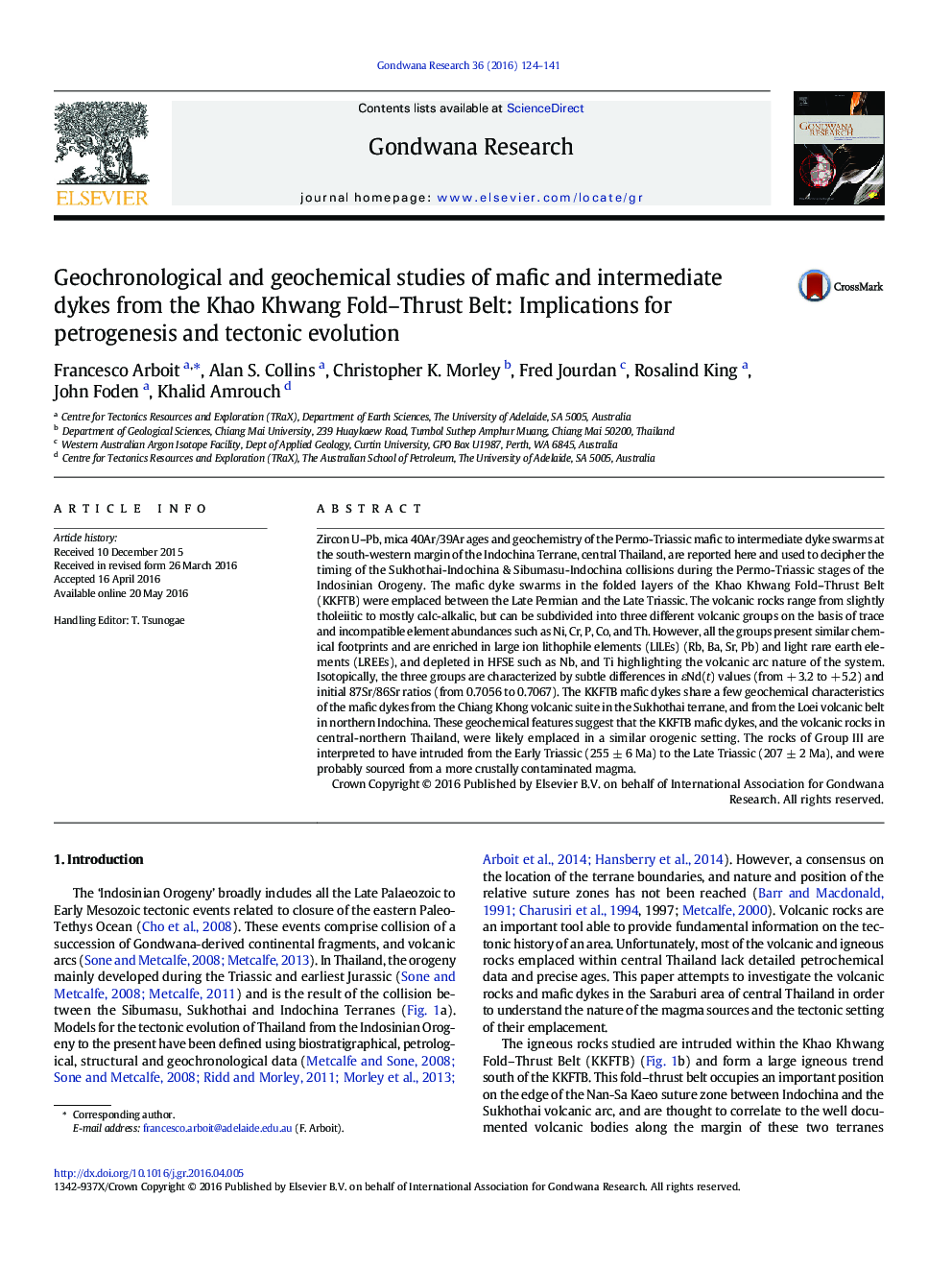| Article ID | Journal | Published Year | Pages | File Type |
|---|---|---|---|---|
| 4726623 | Gondwana Research | 2016 | 18 Pages |
•New petrographic subdivision of the rocks that intruded the Khao Khwang fold-thrust belt•New tectonic model for the Indosinian orogeny on the Indochina's Block margin from the Mid Permian to the Late Triassic•New geochemical and geochronological data of the rocks that intruded the southern Loei Volcanic belt in central Thailand
Zircon U–Pb, mica 40Ar/39Ar ages and geochemistry of the Permo-Triassic mafic to intermediate dyke swarms at the south-western margin of the Indochina Terrane, central Thailand, are reported here and used to decipher the timing of the Sukhothai-Indochina & Sibumasu-Indochina collisions during the Permo-Triassic stages of the Indosinian Orogeny. The mafic dyke swarms in the folded layers of the Khao Khwang Fold–Thrust Belt (KKFTB) were emplaced between the Late Permian and the Late Triassic. The volcanic rocks range from slightly tholeiitic to mostly calc-alkalic, but can be subdivided into three different volcanic groups on the basis of trace and incompatible element abundances such as Ni, Cr, P, Co, and Th. However, all the groups present similar chemical footprints and are enriched in large ion lithophile elements (LILEs) (Rb, Ba, Sr, Pb) and light rare earth elements (LREEs), and depleted in HFSE such as Nb, and Ti highlighting the volcanic arc nature of the system. Isotopically, the three groups are characterized by subtle differences in εNd(t) values (from + 3.2 to + 5.2) and initial 87Sr/86Sr ratios (from 0.7056 to 0.7067). The KKFTB mafic dykes share a few geochemical characteristics of the mafic dykes from the Chiang Khong volcanic suite in the Sukhothai terrane, and from the Loei volcanic belt in northern Indochina. These geochemical features suggest that the KKFTB mafic dykes, and the volcanic rocks in central-northern Thailand, were likely emplaced in a similar orogenic setting. The rocks of Group III are interpreted to have intruded from the Early Triassic (255 ± 6 Ma) to the Late Triassic (207 ± 2 Ma), and were probably sourced from a more crustally contaminated magma.
Graphical abstractFigure optionsDownload full-size imageDownload as PowerPoint slide
